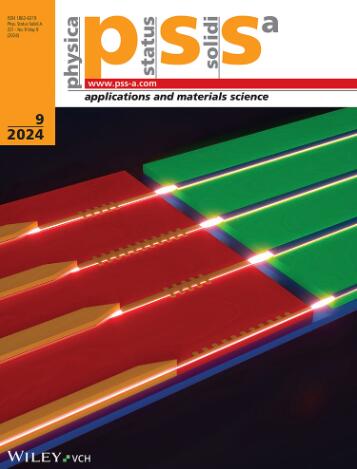Defect Engineering for Enhanced Silicon Radiofrequency Substrates
IF 1.9
4区 材料科学
Q3 MATERIALS SCIENCE, MULTIDISCIPLINARY
Physica Status Solidi A-applications and Materials Science
Pub Date : 2024-07-19
DOI:10.1002/pssa.202400215
引用次数: 0
Abstract
Herein, high‐resistivity silicon substrates with specific He用于增强型硅射频基板的缺陷工程学
本文研究了特定 He+ 离子植入的高电阻率硅衬底,以减轻寄生表面传导效应。研究了几种植入后热退火条件。利用共面波导(CPW)结构的小信号特性评估了基底在射频(RF)中的性能。在 600 °C 下退火 2 小时的晶片达到了 4 kΩ cm 的最佳有效电阻率 (ρeff)。这些高射频性能源于离子注入产生的缺陷的性质。利用光谱测量和扫描透射电子显微镜对缺陷进行了深入分析。结合这些测量结果表明,{311}缺陷可能是实现高射频性能的原因。最后,讨论了射频域中电荷载流子捕获与缺陷性质之间的联系,为低损耗射频基底制定了缺陷工程策略。所提出的制造方法可以在晶圆上局部制造射频钝化层,从而将射频器件与全耗尽绝缘体硅技术结合起来。
本文章由计算机程序翻译,如有差异,请以英文原文为准。
求助全文
约1分钟内获得全文
求助全文
来源期刊
CiteScore
3.70
自引率
5.00%
发文量
393
审稿时长
2 months
期刊介绍:
The physica status solidi (pss) journal group is devoted to the thorough peer review and the rapid publication of new and important results in all fields of solid state and materials physics, from basic science to applications and devices. Among the largest and most established international publications, the pss journals publish reviews, letters and original articles, as regular content as well as in special issues and topical sections.

 求助内容:
求助内容: 应助结果提醒方式:
应助结果提醒方式:


